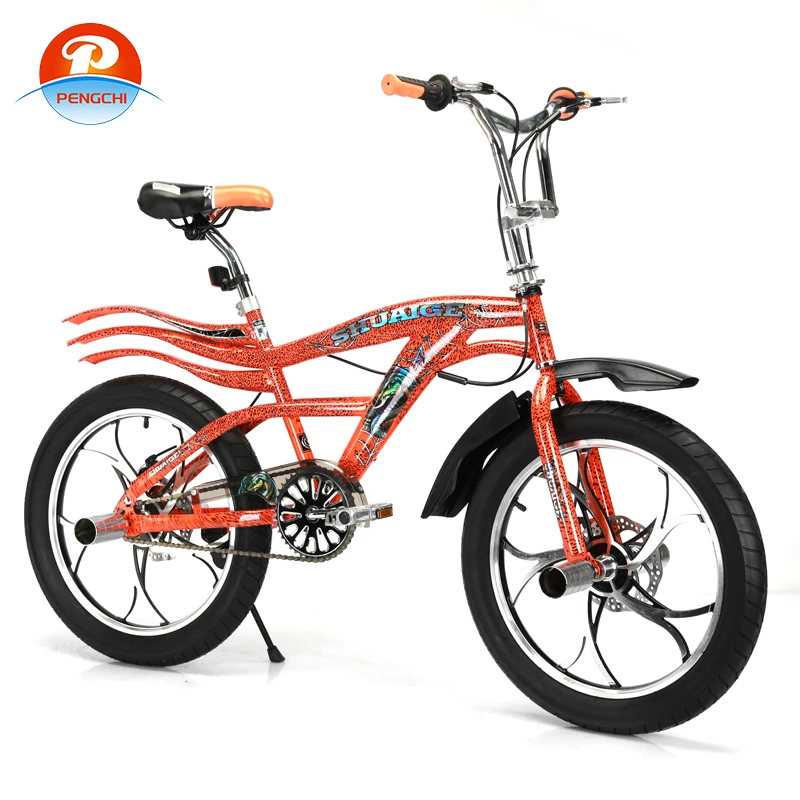10 月 . 31, 2024 00:34 Back to list
how to pick the right size bike
How to Pick the Right Size Bike
Choosing the right size bike is crucial for comfort, efficiency, and safety when riding. Whether you're a beginner or an experienced cyclist, the right fit can make all the difference in your cycling experience. Here are some guidelines to help you find the perfect bike size.
1. Understand Bike Types
Before diving into sizing specifics, it's important to consider the type of bike you need. Road bikes, mountain bikes, hybrid bikes, and others each have different geometries and sizing systems. For example, road bikes often have a more aggressive riding position, while mountain bikes are designed for a more upright posture. Understanding your riding style and the terrain you plan to tackle will help narrow down your options.
2. Know Your Measurements
To determine the correct bike size, you need to take a few key measurements of your body. The most important measurements include your inseam length, height, and arm length.
- Inseam Stand straight with your feet approximately shoulder-width apart. Measure from the ground up to your crotch. This measurement is particularly important for determining the frame size, especially in mountain bikes. - Height Stand against a wall and measure from the floor to the top of your head. This will give you a general idea of the overall size of the bike you need.
- Arm Length While it’s less critical, arm length helps gauge reach for handlebars, particularly in road cycling.
how to pick the right size bike

Once you have your measurements, consult size charts provided by bike manufacturers. These charts convert your body measurements into bike sizes, which can vary between brands. For instance, a small in one brand may be a medium in another, so always double-check specific size guides. Generally, bike sizes are labeled as XS, S, M, L, and so on for mountain bikes, while road bikes often use numerical sizing (e.g., 52cm, 56cm).
4. Test Ride
If possible, always test ride a few bikes before making a purchase. Saddling up will help you understand how the bike feels. You should be able to straddle the top tube comfortably, with a slight bend in your knees when the pedals are at their lowest point. Your arms should reach the handlebars without overstretching, and you should feel balanced and in control.
5. Adjusting the Fit
Even after choosing the right size, micro-adjustments can enhance your comfort and performance. Consider tweaking the saddle height, angle, and position. Handlebars can often be adjusted for a more comfortable reach. Don’t hesitate to visit a local bike shop for professional fitting if you’re unsure.
6. Consider Specialized Options
If you’re particularly tall, short, or have unique body proportions, consider looking into brands that offer specialized sizing or adjustable bikes. Many brands now cater to these needs, ensuring that every cyclist can enjoy a comfortable ride.
Conclusion
Choosing the right bike size may seem daunting, but by understanding your measurements, consulting size charts, and test riding, you can find the perfect fit. A well-fitted bike will not only enhance your cycling experience but also reduce the risk of injury. Happy riding!
-
Toy Car with Parental Remote - Safe Electric Ride-On Car with Parental Control
NewsJun.10,2025
-
Cheap Bikes for Students - Affordable & Durable Student Bicycles Online
NewsJun.10,2025
-
Children Balance Bike Lightweight & Adjustable OEM Designs
NewsMay.30,2025
-
Junior BMX Race Bikes Lightweight, Durable & Speed-Optimized
NewsMay.30,2025
-
21-Speed Foldable Gear Cycle Compact & Portable Commuter Bike
NewsMay.30,2025
-
Affordable & Durable Bikes for Students Campus Commutes Made Easy
NewsMay.29,2025



